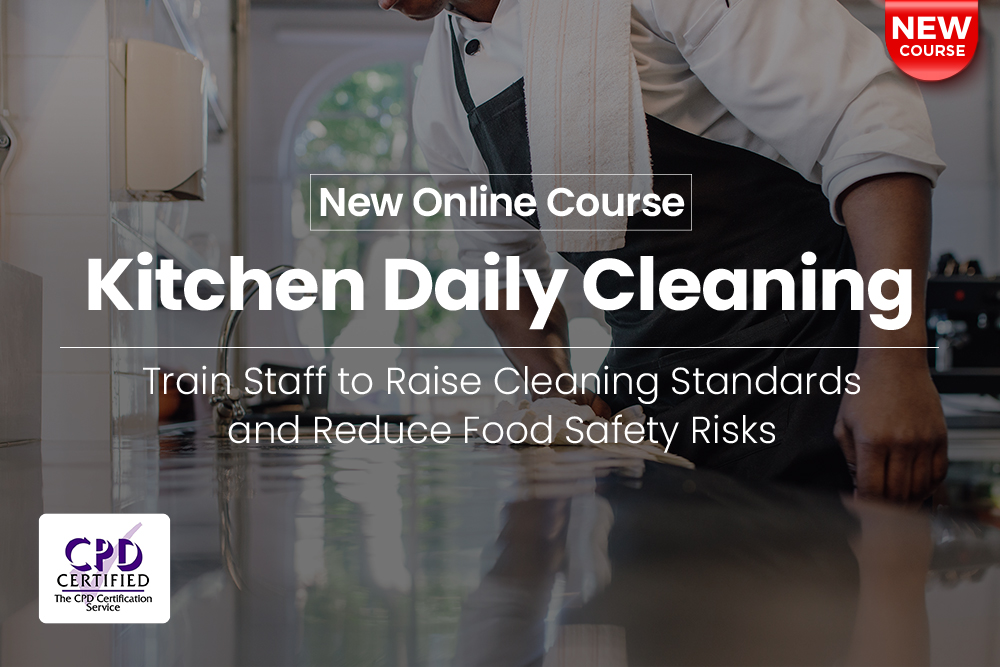
By law, every employer in the UK must provide adequate health and safety training to their employees. This training should be approved and the employees should be provided with a certificate upon completion to demonstrate compliance.
Traditionally, this type of health and safety training was completed face-to-face in classroom settings. However, in recent years, many employers now are choosing e-learning options for their training.
While online health and safety training had already been growing in popularity, the Coronavirus pandemic significantly contributed to its adoption. Besides the obvious benefit that virtual training can be completed from home, eliminating the possibility of the virus spreading, there are numerous others.
But does online training come meet the same legislative requirements as face-to-face learning? And is it just as effective? In this article, we will take a look at why you need training, what it means to earn an online health and safety certificate and how to choose a provider.
Meeting the legal requirement to provide health & safety training
The Health and Safety at Work Act 1974 (HSWA) and the Management of Health and Safety at Work Regulations 1999 form the foundation of Health and Safety law in the UK. Together, this legislation is incredibly important as it outlines the general health and safety responsibilities that employers have to protecting the public, their employees, and themselves.
Under these laws, employers are required to risk assess and control for the health and safety hazards that are caused by their operations. This means protecting workers, contractors or the public from accident or injury. As part of this mandate, they must ensure employees have enough information, instruction and training to work safely.
Along with this, there is numerous other legislation related to training that employers must abide by. For instance, the Provision and Use of Work Equipment Regulations 1998 (PUWER) requires employers to protect from the risks of equipment, while Control of Substances Hazardous to Health (COSHH) require employers to control for hazardous substances. As such, adequate training, again, must be provided.
When it comes to meeting these legal obligations, and also, providing evidence (certification) that you have done so, online training is, with the exception of a few areas, just as valid.
What types of health & safety training are required?
The legislation makes it clear that they aren’t going to tell employers exactly what type of training they need to provide. It is their duty to identify what is needed and provide it. But there are some basic guidelines to follow.
Basic training requirements
Different types of health and safety courses that are generally required, include:
- Induction courses for new employees
- Refresher courses for current employees
- Industry specific courses for specialised work.
Training for all levels within the organisation
Employers should also ensure that each member of their organisation is provided training sufficient for their level of work. For instance, front line workers will need to understand the risks of the equipment they use.
Managers and supervisors, on the other hand, will require training which instructs them for how to effectively manage health and safety. This will include training on how to conduct risk assessments, operate a health and safety management system and effectively communicate these risks to their employees.
Does online training covers the requirements?
Fortunately, the online training market has developed to help employers meet each of the main training areas they must cover. For instance, online providers of training offer libraries of material that cover specific risks. If employees use vibrating tools and equipment, there are courses available that cover hand-arm vibration training.
For niche areas, such as site inductions providers can also work with clients to develop bespoke courses, which address specific needs.
There are also courses for each level within the organisation. For example, modules such as IOSH Managing Safely and IOSH Safety for Executive and Directors are full courses to help leaders within an organisation understand how to fulfill their own duties when it comes to health and safety.
Why all health & safety training should be certified?
Whatever course work is required, it is essential that it is certified. Course certification means that the course being undertaken has been approved by industry experts. It demonstrates employees have the course they have just undertaken is accurate, of good quality and sufficient to meet the aims of the course.
As an example, one important certification body is the Royal Society for the Prevention of Accidents (RoSPA). RoSPA is a charity that has been around for over 100 years promoting health and safety within the workplace. One of their main goals is to prevent accidents so people can have the freedom to “enjoy personal choices, health, happiness, wellbeing, relationships, and a huge variety of life-affirming activities.”
In order to earn RoSPA assurance, providers must submit their online training courses to the body for review. RoSPA then has industry experts rigorously assess the programmes. Where courses do not meet the appropriate standard, they will not receive assurance.
The Institution of Occupational Safety and Health (IOSH) is another long-standing organisation with a high standard of certification for health and safety training. IOSH has designed many industry-leading health and safety training curricula. Their IOSH Managing Safely course, mentioned above, is an internationally recognised certificate sought after by those in leadership and management roles worldwide.
To provide a course, such as Managing Safely, online training providers must work closely with the approval body to ensure they are meeting the high standards of the course.
Is online training as effective as classroom training?
It’s a common misconception that traditional face to face training that takes place in a classroom is superior to training conducted virtually. However, according to research, this is not true. In fact, studies have shown that when the methods of instruction are the same, both online learning and classroom learning have the same result.
So, for instance, if you attend a presentation given by an instructor in a classroom and a colleague sees the same presentation over zoom, you will both walk away with the same amount of knowledge.
Digitally enhanced learning
However, when the methods are not the same, when e-learning takes advantage of its digital nature, it outperforms classroom instruction in most instances. Moreover, blended learning, a mix of classroom and online training tends to have the best overall results.
If you think about it, this makes sense. Online study allows us to study at our own pace, when we are comfortable. We can be free from distractions and also have the ability to repeat instruction again and again as many times as necessary.
In addition, the virtual environment opens up a world of technology to enhance learning. Consider 3D modeling of complex topics, graphics and charts, as well as simple aspects such as digital reminders to repeat and refresh training, until it is ingrained.
Bringing online training to the real world
At the same time, once we have learnt this knowledge, we need to also practice it. Otherwise, it is forgotten. That is why the best training methodologies also incorporate hands on elements, which require users to demonstrate on site how they are applying what they have learned. This then repeated, again and again, until the new habits, become second nature.
There are now many tools available that do exactly this. Some examples include the Human Focus Ergo Analyser and e-Checklists.
The Ergo Analyser allows supervisors to video record trainees undertaking everyday tasks such as manual handling in the work environment. After this is done, the tool automatically analyses their posture and movements and provides feedback on whether the training they learned through online training is being implemented.
The e-Checklist system ensures that inspections and work tasks are being completed when they are meant to and as they are meant to. Visual cues are used to remind staff when items such as mandatory inspections must be completed. A digital device guides them through the process, and records it.
How to Get a Health & Safety Certificate Online?
When looking for an online health and safety training provider consider your organisation’s needs and the hazards your workers will be exposed too. Some training providers have a specific library of health and safety training but you may need a provider with a much wider range of training content. You may also want a tailored training service or to develop your own content for employees to learn from.
Ensure that when you are exploring the e-learning market you know what you are looking for, which industry specific courses that your workers need and all potential hazards. This will keep your research more specific, and you’ll be able to analyse each provider with your organisations questions.
You should also consider your business’ administration. Due to the UK law, it’s important to choose an e-learning company that offers a system that allows you to assign, track, maintain and merge your records. Human Focus offers this through a learning management system that allows you to scan and upload pre-existing records.
Sign Up to Earn an Online Health & Safety Certificate Today
Health and Safety isn’t just a legal obligation, it’s a financial and moral obligation to your employees and also the public. When employers look to provide this training, it is becoming abundantly clear, that choosing online providers is very often the best way to go.
E-learning options are often cheaper. They can be completed at the trainee’s convenience, rather than needing to be scheduled into a busy workday. They can also be easily tracked and recorded. And, as online instruction is generally not reliant on one individual instructor’s knowledge and abilities, they guarantee a stronger consistency of content.
Moreover, despite what many believe, research has shown that completing training online is just as effective as classroom-based learning. And in some scenarios, online training is even more effective.
If you are looking for online health and safety training, there are a wide range of organisations providing online certification. But when you’re looking for a provide ensure that they’re offering high quality content so your employees will learn and retain the information they are learning. This will ensure your organisation will perform at their best, and safest whilst increasing overall job retention and employee morale – and legal compliance!



























































































































































































































































































































































































































































































































































































































































































































































